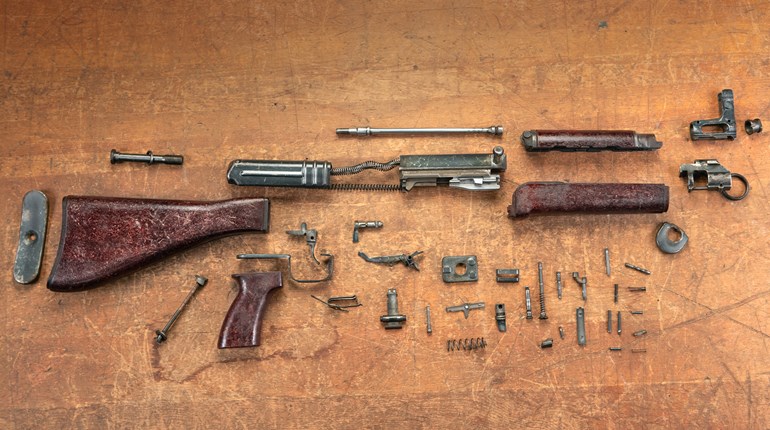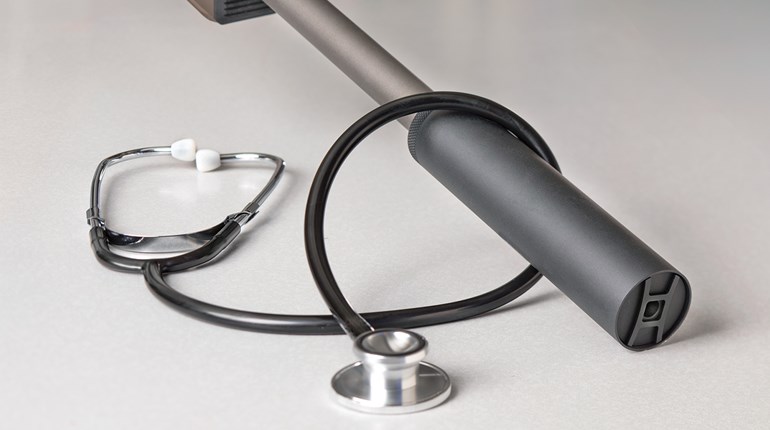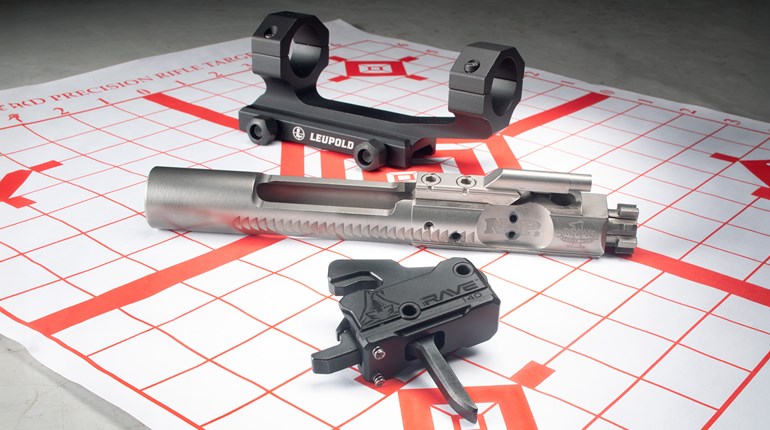
If the shooting community had an awards show, I would be a shoe-in for the “Refuses to Leave His Rifle Alone” trophy. My constant tweaking problem dates back to high school and was a regular feature of my later Army life, too. I still teeter between the quest for a carbine that is so light and trim that it actually subtracts from my body weight and an over-laden behemoth that does many things well, but carries and shoulders with all the grace of an M107.
The annual cycle starts with me stripping down my general-purpose carbine until carrying it is shockingly pleasant. Then I start thinking about ways to increase my capabilities with it. I replace my red dot with a magnified optic in a one-piece mount (because split rings cannot possibly be “stiff enough”). A miniscule gunlight gets bumped by a bigger, more powerful klieg light set abreast of an IR laser. Batteries for my laser/light/optic/hearing aids get stashed in various spaces, while a safety-line-quality, two-point sling with steel QD mounts rounds things out… until a few days later when I start thinking about how much better I shoot off a bipod.
Thus ends the Battle of Accessory Creep with me on the losing side once again. After the hernia repair has healed and I am finished with spinal traction treatments, I go right back to square one.
The problem with this pendulum is that it merely swings through the middle ground, seldom stopping short of either extreme. In other words, I have failed to find or even look for a happy middle ground when configuring my rifle. Last fall I made a partial breakthrough when I replaced my old go-to .308 Win. rifle with a 6.5 Grendel. Even though I immediately shed several pounds from my load, something still did not feel right when I had the lighter Grendel shouldered. But, then I stumbled on something that reignited the light bulb in my head: a .45-caliber flintlock rifle dating to the early 1800s. I found the rough old workhorse lying in the back corner of an antique shop. It was merely a wall-hanger, pieced together from multiple rifles and possessing no significant provenance. But those characteristics gave it an additional quality not shared by any other vintage flintlock rifle I have come across: a very reasonable price.
The moment I first shouldered this rifle, I was reminded how the gunsmith/craftsmen of old paid attention to something we often ignore today: balance. This 57.25-inch-long piece comes to shoulder like it is an extension of the body with very little of its 7.5-pound weight felt in the arms. Its balance point is precisely halfway along the gun’s length—at the exact point where my support hand is naturally placed. Hefting it brings to mind the opening hunt scene from the 1992 film interpretation of “The Last of the Mohicans.” After sprinting through the woods in pursuit of an elk—with a well-balanced flintlock carried at the midpoint—the character Nathaniel Bumppo (“Hawkeye”) suddenly stops, shoulders his rifle and swings through a clean shot on a running bull. That’s one of the many tasks that rifles like this excelled at. The only thing that stopped me from sprinting through the shop at that moment was the fear of having to pay for bunch of broken antiques. Well, that and a general fear of sprinting anywhere for any reason.
Once home, this new treasure compelled an honest evaluation of my own rifle setup. I realized that my lack of attention to weight distribution had resulted in a light rifle that rode heavy in back once a loaded magazine was installed. It felt like a bullpup without the latter’s long barrel/short overall-length advantages. I checked the balance point and found it was several inches behind the midpoint of my rifle. Then I looked at a few other long guns and found much the same story. Since I was unhappy with the way my rifle handled recoil in any upright shooting position, I made a counter-intuitive change: I shifted the horizontal center-of-gravity forward by moving weight. The balance point moved .75-inch forward, placing it just behind my support hand. That change made all the difference in the world. My 6.5 Grendel suddenly shouldered more naturally and allowed me to transition from target to target very smoothly.
The direction to move weight, or the amount of heft to add or subtract, is dependent on how you use your rifle. While a perfect midpoint fulcrum may have worked in the days when accessories were carried in a “Possibles” shoulder bag, today’s riflemen and women have different needs. Fast-moving, competitive-shooting sports or more serious uses like military- and law-enforcement close-quarters-battle engagements require a rifle that can be held either at a low ready or fully shouldered for extended periods. In those cases, shifting some weight rearward may help relieve strain on the extended support arm. The flip side is that having too much weight in back makes a rifle or carbine handle poorly under recoil, which was my problem. Barrels tend to rise more sharply off target as you try to follow through your shots, and lateral movement between targets becomes a jerky and inefficient affair.
Installing a beefier stock, a heavier buffer system or adding weight to a bolt-carrier group can subtly shift the balance point back. If you need to move a bunch of weight rearward, try attaching a stock-mounted, single-mag pouch with a loaded spare magazine. At the other end, a longer, lighter-contour barrel will shift a few ounces forward. If that is not feasible, try a slightly beefier muzzle brake or flash hider. Sound suppressors often add more weight than desired, but QD-style, directional muzzle brakes are more suitably sized for moving the balance point forward. Moving rail-mounted accessories forward on the handguard will also shift the balance toward the muzzle. Also, remember to factor in the weight and feel of a loaded magazine when balancing your rifle.
Special-purpose longarms often have priorities that rank above comfort and ease of handling. A rifle that is carried all day or night may not allow for a single ounce of extra weight. I have been there and I understand that completely. But shifting weight to different places may still be possible. If you are not quite happy with the feel of your go-to rifle, you may find that adjusting its horizontal center-of-gravity gives it just the right feel. Just remember to put on your boots before you sprint out the door and into the nearest woods.



































